New York City has a new landmark, a little bar in the West Village named Julius’, officially recognized by the New York City Landmarks Preservation Commission on December 6th, 2022.
It’s here that one moment of protest (the Sip-In of 1966) set the stage for a political revolution, “a signature event in the battle for LGBTQ+ people to gather, socialize, and celebrate openly in bars, restaurants, and other public places.”
So we thought it would be a great time to revisit our 2019 show on the history of Julius’ and a look at the life of gays and lesbians in the mid 20th century.
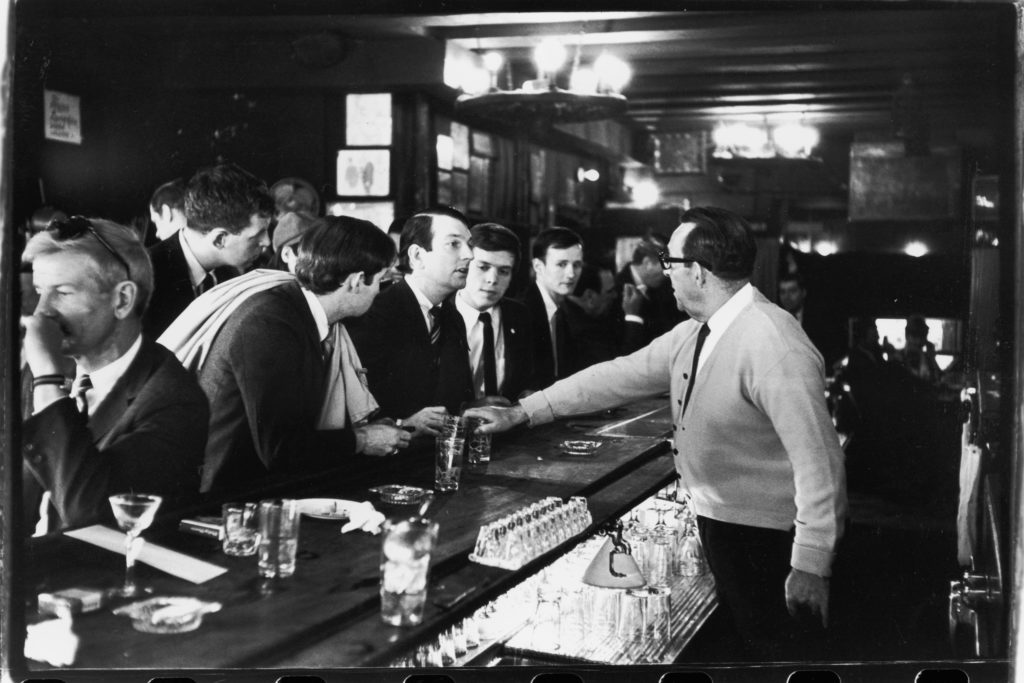
PODCAST Many Americans may now be familiar with Stonewall Uprising, a combative altercation in 1969 between police and bar patrons at the Stonewall Inn in the West Village. It was this event that gave rise to the modern LGBT movement.
But in a way, the Stonewall Riots were simply the start of a new chapter for the gay rights movement. The road leading to Stonewall is often glossed over or forgotten.
By the 1960s, a lively gay scene that traced back to the 19th century — drag balls! lesbian teahouses! — had been effectively buried by decades of cultural and legal oppression.
A few brave individuals, however, were tired of living in the shadows.
In this episode, we’ll be zeroing in on the efforts of a handful of young New Yorkers who, in 1966, took a page from the civil rights movement to stage an unusual demonstration in a small bar in the West Village. This event, called the Sip-In at Julius‘, was a tiny but significant step towards the fair treatment of gay and lesbians in the United States.
IN ADDITION: We’ll be joined by Hugh Ryan, author of When Brooklyn Was Queer, at the bar at Julius’ to talk about the forgotten lives of queer people in the ever-changing borough of Brooklyn.
Listen Now — Sip-In at Julius’ Bar: Celebrating New York’s Newest Landmark
This episode features an audio interview clip from the podcast Making Gay History, an excellent source for gay history. Be sure you check out their coverage of Stonewall 50.
We also feature a musical clip of ‘I Hear A Symphony’ by The Supremes (Motown). The song hit Number #1 on the Billboard charts in November of 1965. The most popular song in the nation at the moment of the Julius’ Sip-In? The Righteous Brothers’ “(You’re My) Soul and Inspiration.”
Julius’ Bar: A Short History
This month is the 50th anniversary of the Stonewall Riots, a chaotic, rowdy altercation that bloomed over the course of the weekend to energize the New York’s LGBT movement. (If you haven’t already, give our podcast on the history of the Stonewall riots a listen.) But despite its reputation, Stonewall is not the oldest gay bar in New York. Not even close.
For that honor, you need only march a few steps to Waverly Place and 10th Street to that beloved old institution Julius (159 W. 10th St). It also happens to be the location of a pre-Stonewall protest of angered gay activists, an event both revolutionary and even occasionally amusing.
Julius is truly an old bar although nobody seems to know exactly how old. The bar itself settles on the year 1864, easily making it one of the oldest bars in New York, just a tad younger than McSorley’s Old Ale House. The building itself is even older, dating from 1826, becoming a grocer in 1840 before transforming to its current, more jovial purposes.
It has many things in common with McSorley’s. The walls are plastered with memorabilia from days gone by. The bar is a well-worn relic, the tables and benches made of old beer barrels.
Like McSorley’s, they even serve burgers, and really, really good ones at that. Its history is a tad more shrouded than McSorley’s but equally studded with famous clientele.
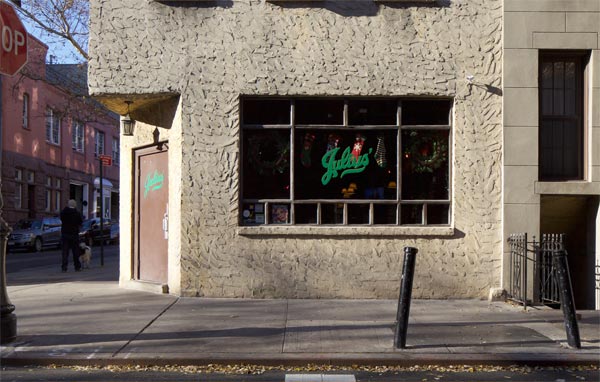
Surviving the 20th century
It was a popular speakeasy throughout the 1920s, evidenced today by Julius’ still existing sidedoor with a peephole. Both Fats Waller and Billie Holiday are rumored to have performed in the backroom, quite likely as Holiday worked at the nearby nightclub Cafe Society during the 1930s.
In subsequent years the clientele was decidedly a mixed lot and Julius would ply writers like Edward Albee, Tennessee Williams and Truman Capote with drink and companionship.
By the 1960s Julius had become a low-key staple of the West Village gay scene. However, it appears that it was ‘straight enough’ that it survived Mayor Robert Wagner’s cleanup of the city in preparation of the 1964 World’s Fair, a wholesale shutdown of West Village gay bars and other ‘undesirable’ places.
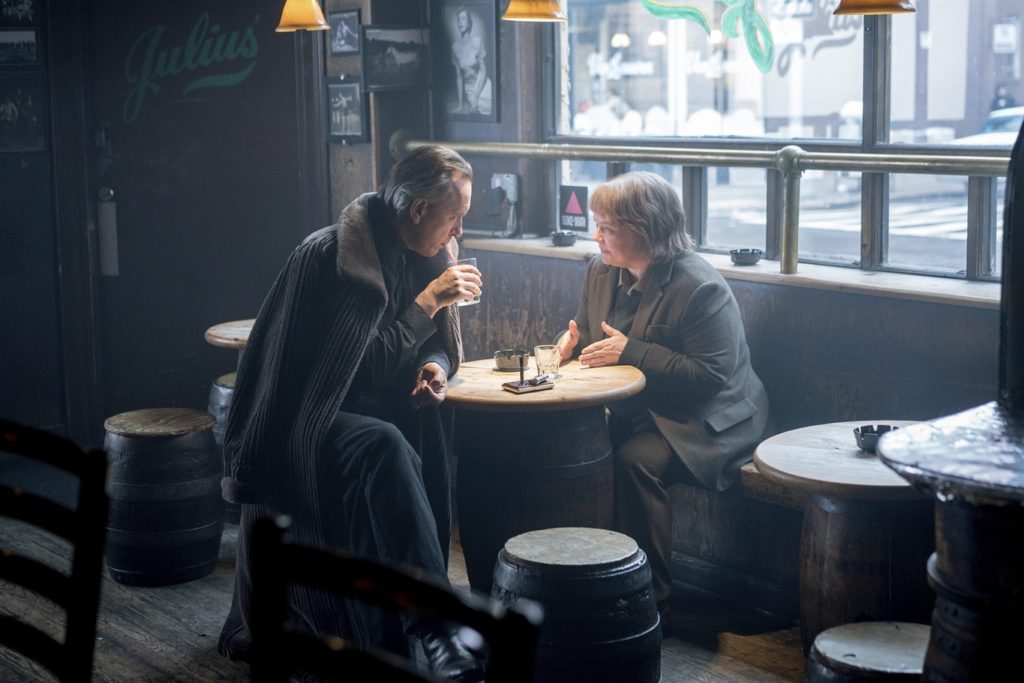
Julius’ Bar in the 1960s
Even through this Julius lived on, although patrons and management alike had to maneuver through rather arcane and sometimes humiliating rituals.
According to writer Edmund White, “There was even a period when we weren’t allowed to face the bar but had to stand absurdly with our back to it to prove, I suppose, that we had nothing to hide.”
It gets even more absurd. The New York State Liquor Authority banned bars from serving drinks to gays and lesbians. This rule was sometimes ignored by brazen Village bartenders, but the constant fear of such a twisted regulation being suddenly enforced by an undercover cop eventually drew action from a burgeoning group of young gay activists.

Members of the Mattachine Society, one of New York’s earliest gay organizations, planned on challenging the rule by going into bars, loudly announcing their homosexuality and ordering a drink.
Their statement at the bar would be calm and simple: “We are homosexuals. We are orderly, we intend to remain orderly, and we are asking for service.”
The key would be that they were followed around by a phalanx of press representatives. So, when the bar refused to serve them, the Mattachine Society would have their moment, captured and ready for print.
More Than Just A Drink
The challenge came on April 21, 1966, more than three years before the Stonewall riots. They told members of the press to meet them at the Ukrainian-American Village Restaurant but management closed shop before they arrived. They tried two other bars, a Howard Johnson’s and a place called Waikiki, and each time they were served without incident.
But of course, the organizers were looking for an incident. They arrived at Julius for their big moment.
The now-legendary Julius Sip-In, as the event as come to be called, was a carefully engineered event with a few unexpected detours, yet it served its purpose. The New York Times even ran the story, under the rather backhanded headline, “3 Deviates Invite Exclusion by Bars.” The law was successfully challenged in court.
Since then, Julius has quietly sat on the sidelines, ceding the historical spotlight to Stonewall around the corner, observing both the curious changes to the neighborhood and the development of a viable and open gay community in the Village and elsewhere.
You don’t have to be gay to appreciate its unique place in New York City history. Just grab a stool and spend awhile admiring the bar’s warm, lived-in details.
Oh, and you really must try the burgers. Did I say that already?
By the way, who the heck is Julius? According to one speculation, Julius was the name of the original owner’s basset hound.
FURTHER READING
Stonewall: The Riots That Sparked The Gay Revolution by David Carter
Gay New York by George Chauncey
Stonewall: The Definitive Story of the LGBTQ Rights Uprising that Changed America by Martin Duberman
Odd Girls and Twilight Lovers by Lillian Faderman
Greater Gotham by Mike Wallace
and of course Hugh Ryan‘s When Brooklyn Was Queer. Thanks to Hugh for coming on the show and joining us at Julius Bar!
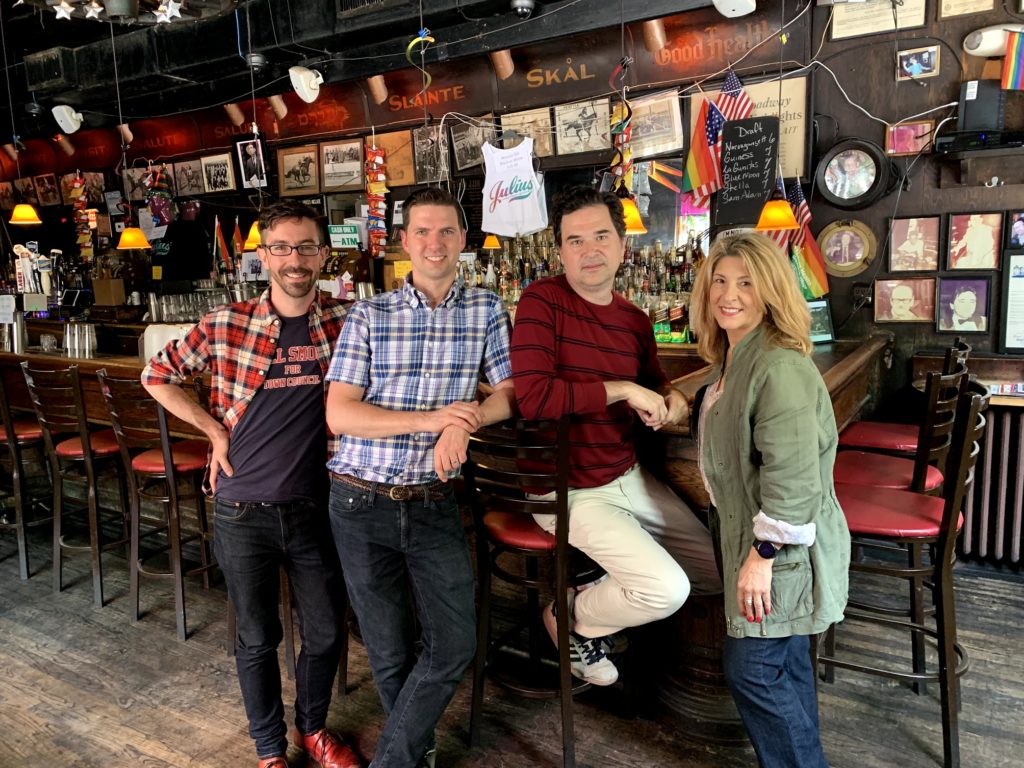
FURTHER LISTENING
Three companion shows to this episode that you’ll definitely want to listen (or re-listen to) after Sip-In At Julius: Gay New York in the 1960s:
__________________________________________________________

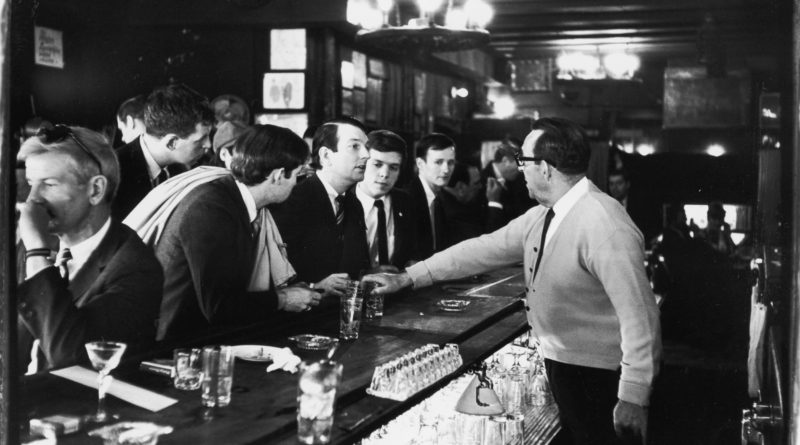
4 replies on “The Sip-In of 1966: Celebrating Julius’ Bar, New York’s Newest Landmark”
/Prolific Playwright Larry Myers has penned
“Situation : Sip In at julius” a memory play
Dr Myers was a Tennessee Williams intimate and
has been produced bicoastally for several decades
[…] Authority’s regulation that prohibited bars from serving homosexuals. You can listen to The Bowery Boys episode on this important moment in New York’s LGBTQ story. History aside, don’t miss the […]
Great!
Dr. Larry Myers is an innovative. prolific activist dramatist. A close friend to Randolf Wicker pictured above. Myers’ executive / artistic direction of Dramatic Workshop II casts theater arts into a service /learning mode. He created this unit with one of its original founders,
Dr. Maria
(Mrs.Erwin) Piscator.